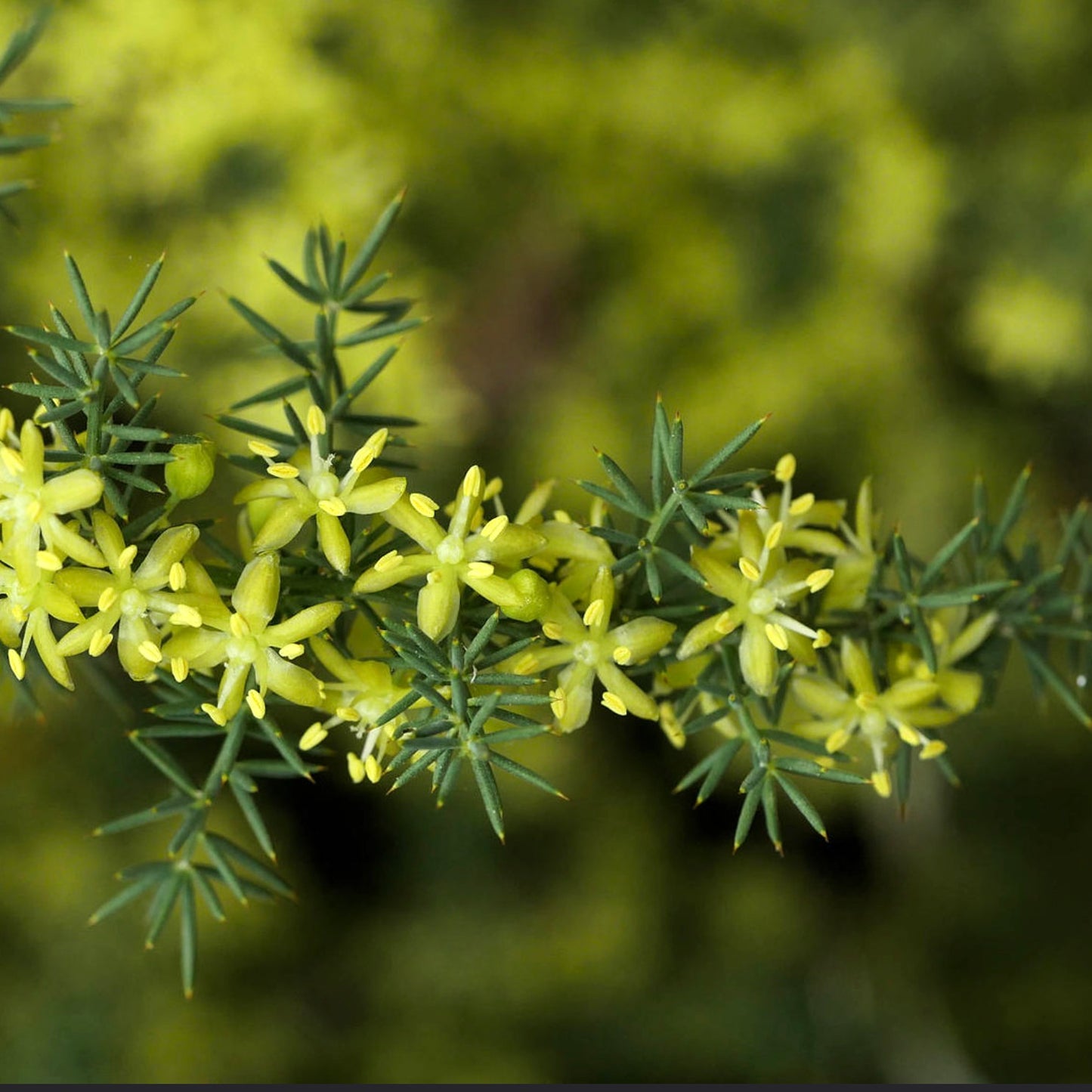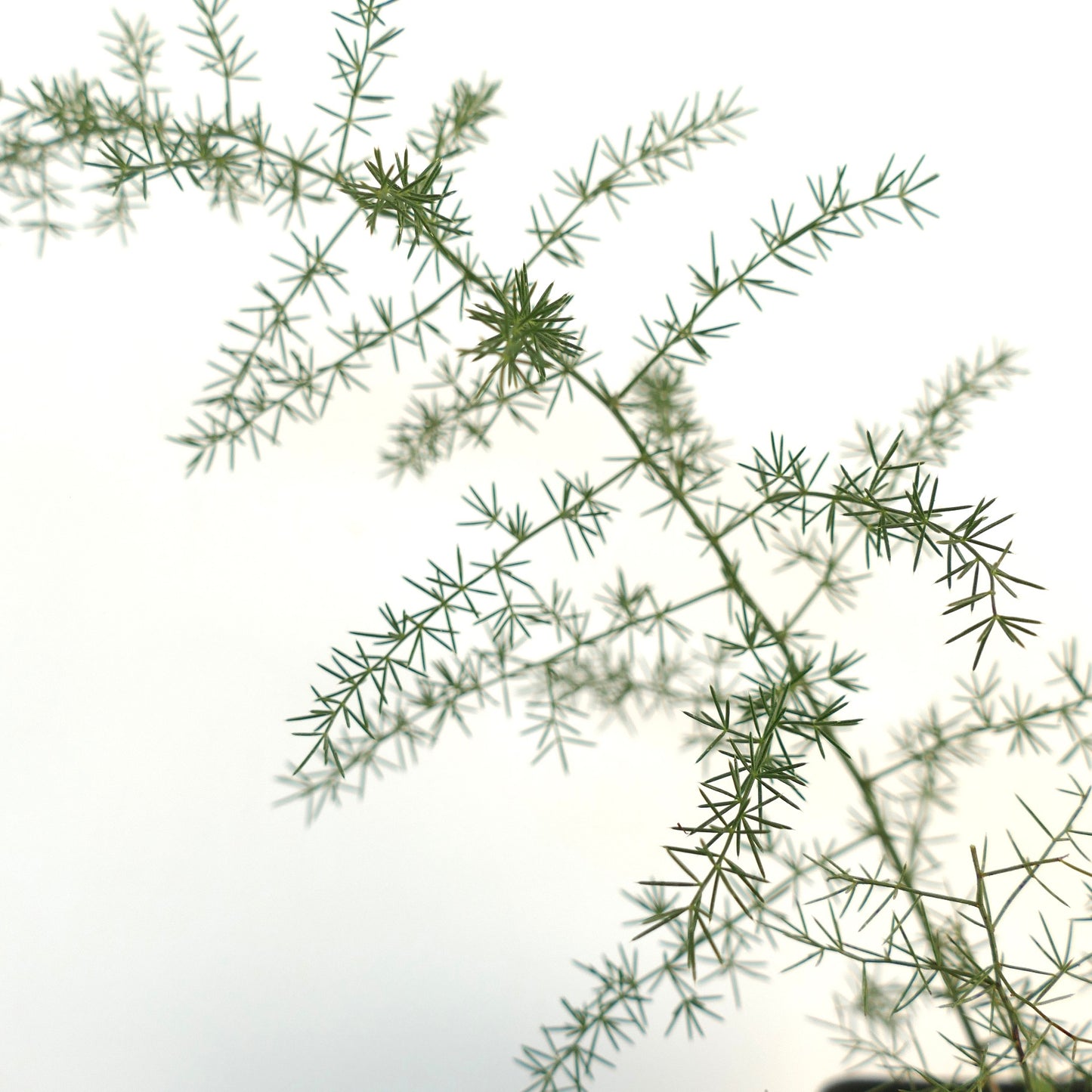- Catalogue Plants
Asparagus acutifolius 20-30cm
Asparagus acutifolius 20-30cm
Couldn't load pickup availability
Plant Description
Asparagus acutifolius, commonly known as the Wild Asparagus or Narrow-Leaved Asparagus, is a perennial plant that belongs to the Asparagaceae family. Unlike the cultivated asparagus (Asparagus officinalis) commonly found in gardens and supermarkets, Asparagus acutifolius is a wild variety with a unique charm. Here's a brief description and some cultivation tips for Asparagus acutifolius:
Asparagus acutifolius is a hardy, woody-stemmed perennial plant that produces delicate, fern-like foliage. The plant can reach heights of 3 to 6 feet (1 to 2 meters). Its leaves are narrow and feathery, with fine needle-like structures, giving them a delicate appearance. During the flowering season in late spring and early summer, Asparagus acutifolius produces small, star-shaped white or pale pink flowers that form in clusters. While the primary appeal of this plant is not its edible shoots, it is cultivated for its ornamental value and adaptability.
Cultivation:
-
Light: Asparagus acutifolius thrives in full to partial sunlight. It can tolerate some shade but prefers direct sunlight for optimal growth.
-
Temperature: This asparagus species is hardy and can adapt to a range of temperatures. It is suitable for USDA hardiness zones 6-9.
-
Soil: Plant Asparagus acutifolius in well-draining soil enriched with organic matter. It prefers slightly acidic to neutral soil conditions.
-
Watering: Keep the soil consistently moist, especially during the growing season. However, avoid waterlogged conditions, which can lead to root rot. Reduce watering in the dormant winter months.
-
Mulching: Apply a layer of organic mulch around the base of the plant to help retain moisture, suppress weeds, and maintain a stable soil temperature.
-
Pruning: Prune the plant in late winter or early spring to remove dead or damaged foliage. This promotes healthy growth and maintains the plant's appearance.
-
Fertilization: Asparagus acutifolius benefits from a balanced, slow-release fertilizer applied in the spring as new growth begins.
-
Support: As the plant matures, it may require support to prevent it from falling over or bending. Use stakes or trellises to keep the stems upright.
-
Propagation: This asparagus species can be propagated through seeds or by dividing established clumps. Seeds should be sown in spring, while division can be done in early spring or fall.
-
Harvesting: While the primary purpose of cultivating Asparagus acutifolius is not for its edible shoots, you can harvest the tender young shoots for culinary use when they emerge in spring. However, the primary value of this plant is its ornamental appeal.
Asparagus acutifolius is a unique and attractive addition to gardens and landscapes, appreciated for its delicate foliage and low-maintenance requirements. While it may not be as commonly grown for its edible shoots as cultivated asparagus varieties, it offers an alternative and visually appealing option for gardeners seeking an ornamental asparagus species.
IMPORTANT: Please be aware that picture 1 show adult plant not for sale, the offer is for a plant in the dimension indicated in title description.
Disclaimer: Please keep on mind that the plant may have grown since pictured. Also be aware that most plants change across seasons. If present foliage could have been fallen or change in its color.
Botanical family: Asparagaceae
Botanical genus: Asparagus
Botanical species: Asparagus acutifolius
SKU:BA-0636-S
Cultivation
Cultivation
Additional information
Additional information
Plant Height: 20-30cm
Plant Diameter:
Picture Taken on:
Pot Size:
Grafted/Not Grafted:






